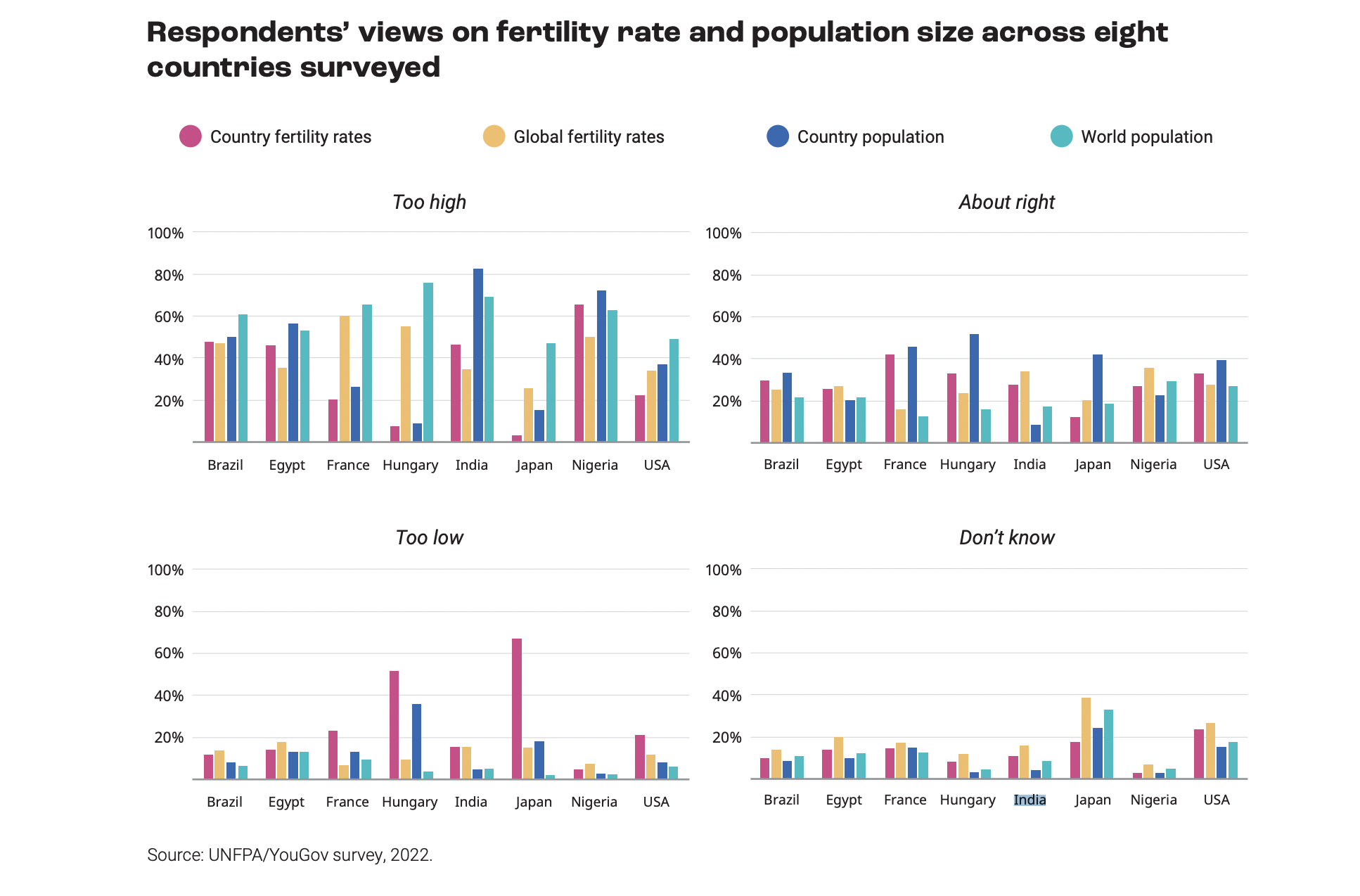Follow us on Telegram for the latest updates: https://t.me/mothershipsg
India’s population will overtake that of China by mid-2023, paving the way to become the most populous country in the world, according to a report released by the United Nations (UN) on Apr. 19.
The former’s population is expected to reach 1.4286 billion by mid-2023 while that of China will be 1.4257 billion, according to the 2023 “State of World Population Report” by the UN Population Fund (UNFPA).
This means that India will have 2.9 million people more than China.
China has been the most populous country in the world since 1950 when the UN began its population census, according to CNN.
The third most populous country will be the United States, though far behind with a population of 340 million people.
In November 2022, the global population had also officially hit 8 billion.
China's population decline
While India has the world's biggest population of people between the ages of 15 and 24, China on the other hand was experiencing an increasingly ageing population and sluggish demographic growth, Associated Press (AP) reported.
This has resulted in expectations that India could become an important economic and global player in the coming years.
In 2022, China’s population declined for the first time in 60 years, which could impact its future economic and foreign policies.
In response to the report, China’s foreign ministry spokesperson Wang Wenbin said in a press conference on Apr. 19 that a country’s demographic dividend depended on "size and quality".
“Size matters, but what matters more is talent resource,” he said.
He noted that China has implemented a strategy to deal with their ageing population, such as the third-child policy.
“As Premier Li Qiang pointed out, China’s demographic dividend has not disappeared, and our talent dividend is in the making. The driving force for China’s development remains strong,” Wang stated.
Anxiety within India
According to government data cited by Reuters, India’s population has been growing at a rate of 1.2 per cent yearly, down from 1.7 per cent in the previous 10 years.
A survey conducted by UNFPA on the population report observed that many in India thought that its population was excessive and that “fertility rates were too high”.
 Image via UNFPA/YouGov survey 2022
Image via UNFPA/YouGov survey 2022
UNFPA’s India representative Andrea Wojnar said that population anxieties had already seeped into “large portions of the general public”.
“India will face a situation of population momentum for the next two to three decades before the decline in the overall population,” she was quoted as saying by the Financial Times (FT).
Though that was the case, she noted that demographic figures should instead be viewed as “a symbol of progress, development and aspirations if individual rights and choices are being upheld," AP reported.
Economists have warned that though India’s economy was growing rapidly due to its rising population, unemployment rates also soared.
The country was also facing issues like climate change, urban-rural divide, gender economic disparities and religious polarisation.
Economic prospects
India’s working-age population consisted of more than 900 million people, based on 2021 data from the Organisation for Economic Cooperation and Development (OECD) cited by CNN.
The country's government anticipated this figure to exceed more than 1 billion over the next 10 years, so policymakers would have to create enough jobs to accommodate the numbers.
Poonam Muttreja, the head of the Population Foundation of India, stressed that India should plan for its youths by forking out “a huge investment in skills for them to take advantage of the opportunities that will come up in the economy for participating in jobs,” according to AP.
According to Rory Green, the Chief China Economist for macroeconomic consultancy TS Lombard, the UN report would potentially affect investors’ decisions in market allocation, FT reported.
Companies were also betting on India's economy, such as tech giant Apple, which opened its first flagship store there on Apr. 18 in a bid to shift its production centre away from China.
Nevertheless, Green said that China’s economy would still remain “far bigger” than India despite the demographic change.
Related:
Top image via Unsplash/Smith Mehta
If you like what you read, follow us on Facebook, Instagram, Twitter and Telegram to get the latest updates.
